Progress 2021-2022
Details on all activities, including annual activity updates can be found on CoastKit under the 'Environmental Management Plan' theme.
Of the 277 activities currently listed in the Delivery Plan, 172 have been completed. Many of the activities listed in the Delivery Plan are funded by Coastcare and the Port Phillip Bay Fund community grant programs.
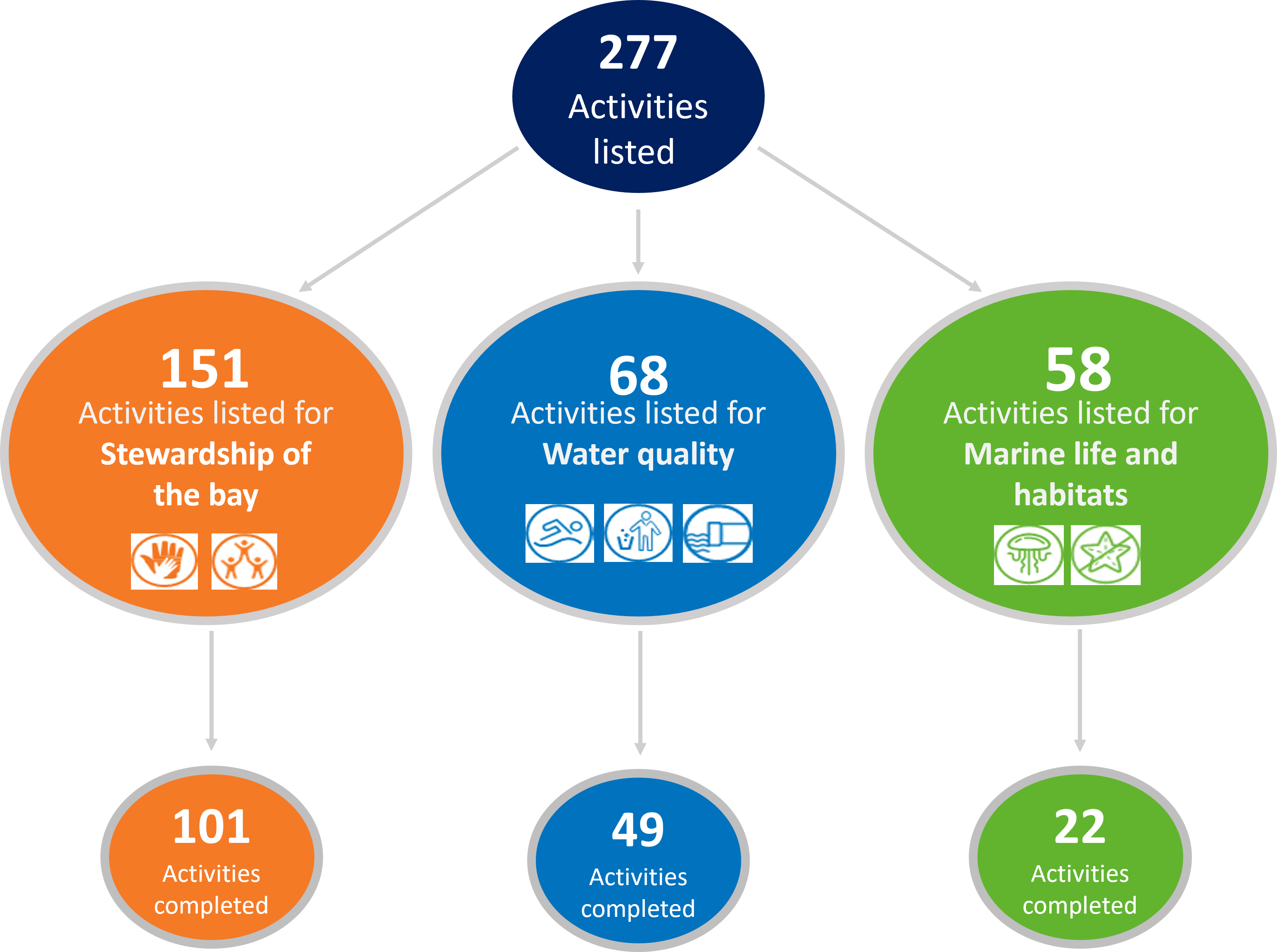
The activities completed to date have enhanced our knowledge of the Port Phillip Bay environment, contributed to the implementation of policy and upgraded infrastructure. The image below showcases some of the collective achievements of the EMP activities completed between 2017-2022.
![]()
The end of June 2022 saw an estimated investment of over $138,000,000 towards implementing the EMP activities. In addition, significant in-kind contributions have been made by the many organisations contributing to the ongoing health and resilience of Port Phillip Bay. These in-kind contributions include more than 255,000 volunteer hours, almost 84,000 staff hours, over $4,500,000 of cash, and close to $7,000,000 of other in-kind contributions, such as equipment and transport.
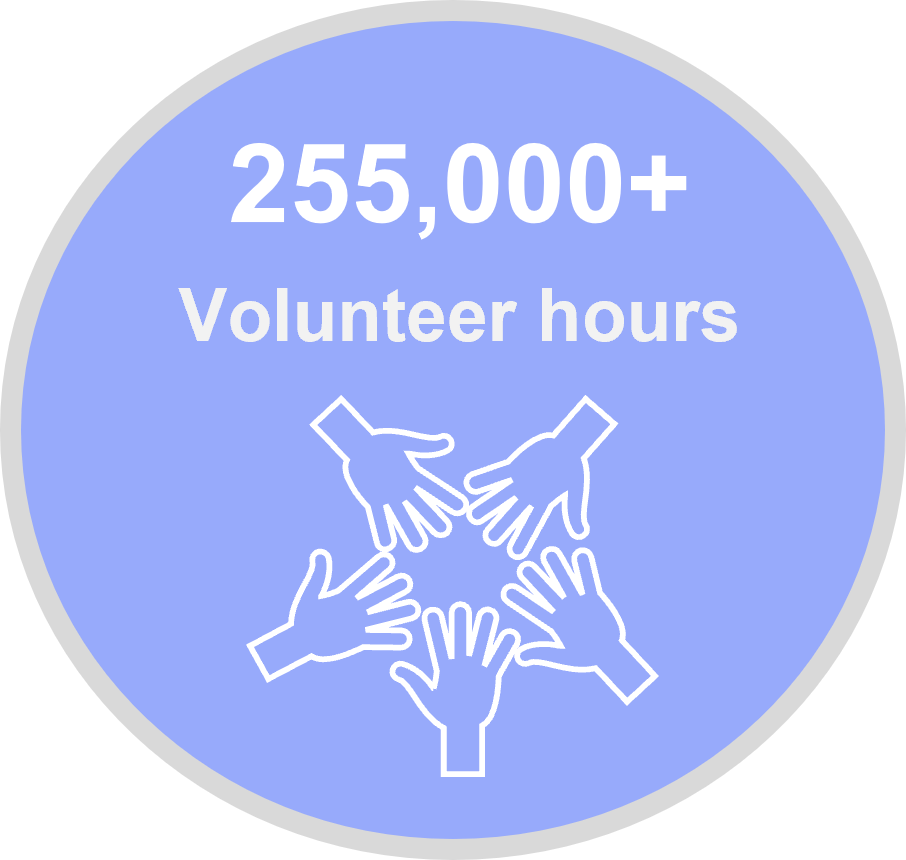
The chart below breaks down the value of the investment, volunteer time, in-kind cash and other in-kind contributions against each of the Environmental Management Plan’s 3 goals.
The Port Phillip Bay Environmental Management Plan 2017-2027 (EMP) engages cross agency and within DEECA to provide updates where resources or actions can be better identified to improving health, value and biodiversity around the Bay. We collaborate with Port Phillip Bay Fund and CoastCare for targeted actions and consideration for aligning goals.
The latest report card results help indicate a few potential priorities. All indicators across the EMP themes were examined and those with a Very Poor or Poor status with a Declining trend in 2021-2022 were:
- Birds: migratory and resident shorebirds
- Invertebrates: abalone and urchins
- Marine mammals: seals.
All of these potential priorities are in the Habitats and Marine Life EMP theme.
The EMP's Monitoring, Evaluation, Reporting and Improvement (MERI) plan utilises report card indices and activity acquittal metrics to evaluate the delivery of the EMP and the health of Port Phillip Bay. The MERI will support regular evaluation and adaptation of the Delivery Plan.
The MERI has been approved after external stakeholder consultation.
The results of the MERI report will be published online.
The Delivery Plan outlines funded activities across government, industry, and the community, that align with the objectives and priorities of the EMP. These will be progressively achieved with new activities identified and added over the EMP’s 10-year implementation. New activities added in the 2022 revision of this Delivery Plan are shown in the map below.
The newly added activities include projects funded by Port Phillip Bay Fund and Coastcare Community Grants, and other relevant projects delivered and supported through other initiatives. Annual progress reports, reporting against actions and activities provide a measure of the EMP’s outputs, and the 5-yearly evaluation will measure the outcomes of actions and activities against Bay health indicators. This approach provides opportunities to respond to new information, resourcing and funding. It also provides regular measures of success against the EMP’s overarching vision.
Aggregated activity achievements to 30 June 2022 are provided in the Achievements section. For further details on all activities, including individual activity annual progress reports, please visit the 'Environmental Management Plan' theme on CoastKit at mapshare.vic.gov.au.
Case studies 2021-2022
The case studies provided by various organisations are activities listed in the 2022 Delivery plan.
Activity name: Snorkelling with Marine Scientists
Activity reference number: 2.1.002.BC
Strategic lead: Victorian National Parks Association
The Great Victorian Fish Count (GVFC) and the Sea Slug Census (SSC) are iconic marine citizen science events, with over 1000 participants every year throughout Victoria. Run by Victorian National Parks Association (VNPA)'s ReefWatch program, they involve numerous Victorian dive stores, marine care groups and dive clubs. In recent years, there has been considerable interest from groups on social media to host these events. However, due to insurance requirements these less formal groups have been unable to participate. This project will harness social media to recruit and engage volunteers. Partnering with Snorkelling Melbourne Victoria, Victoria's largest snorkelling group on social media (+4,700 members).

The benefit of using informal online communities to recruit volunteers and promote events includes:
- Greater reach for potential volunteers - increased capacity for flexible events (rescheduling or relocating in response to changing environmental conditions) through instantaneous notifications seen by the entire membership.
- Scheduling events in consultation with members which address concerns of changes in volunteer availability and commitment identified in DEECA's Environmental Volunteering social research report (DELWP 2020).
- Improved ease sharing information, guidelines, photos and videos pre and post events.
VNPA will train ReefWatch marine scientist staff as snorkel instructors, then working with Snorkelling Melbourne Victoria, run four snorkelling events at locations and times that enable participants to join both the GVFC and the SSC. Education and engagement materials (t-shirts, stickers and, for the first time in Victoria, Sea Slug identification slates) required to run the GVFC and SSC will be produced for Victorian snorkelers. Plus, equipment required to safely deliver events will be purchased (e.g. dive rescue floats, beach shelter). Streamline Media will produce a series of videos and assets for ReefWatch and Coastcare to use to improve volunteer recruitment within this space. Including a new volunteering video highlighting the diverse nature of volunteering appealing to a broad audience.


Activity name: Trial of Beach Guard method for early detection of sewer spills
Activity reference number: 5.2.002
Strategic lead: South East Water
Faecal contamination of waterways and beaches from sewer overflows and leaks can have serious implications for the health of recreational users and local ecosystems. When this happens it’s important that water authorities are alerted to these events as swiftly as possible so they can respond quickly to minimise impacts.
A collaborative project between South East Water and Monash University investigated the use of various methods and sensors to detect human faecal pollution in Tanti Creek, Mornington. The project relied on a combination of in-situ probes and verification sampling to identify water quality changes that can provide early warning of sewage contamination. The aim was to deliver affordable water quality sensors that will detect heavy faecal contamination (sewage) in waterways in a timely manner. This approach could be easily distributed across a large stormwater drainage system.
Initial trial
From 2017 to 2019 small low-cost depth, electrical conductivity (EC) and temperature sensors were installed for reporting remotely in real-time and trialled at four sites along Tanti Creek (shown in Figure below).
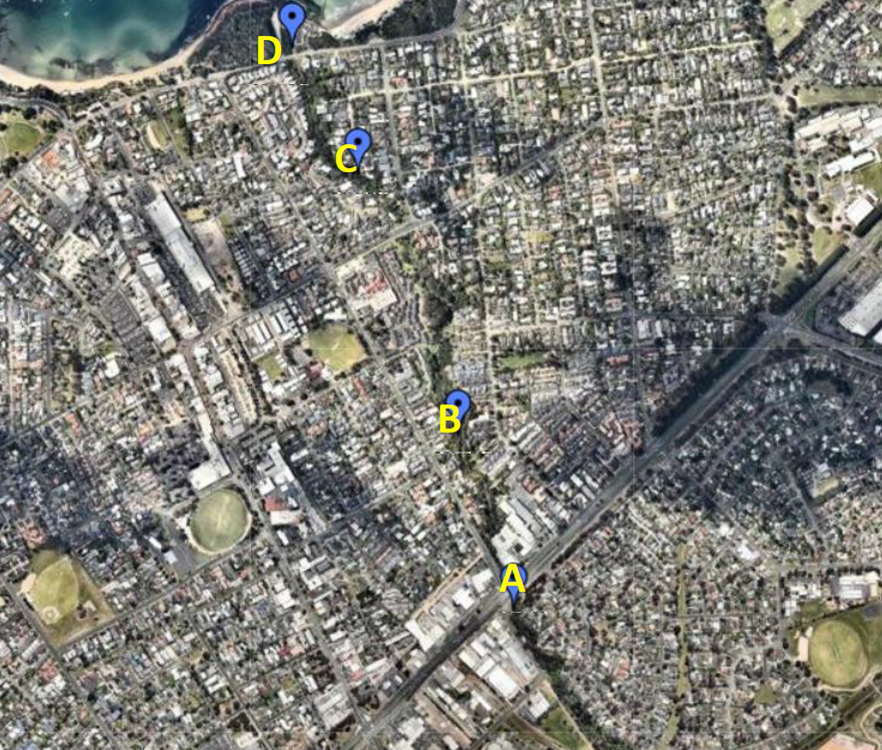
Over the course of the trial, measurements from the Monash University low-cost prototype probes were compared against commercially available instruments including the Horiba and EXO2 sondes to see if strong relationships were apparent. Overall, the low-cost probes performed quite well showing good correlation between the probes.
Sewer spill simulation
During the project, there was no reported sewage overflow that occurred in Tanti Creek to test whether the sensors could adequately detect overflow events. The performance of the prototype sensors were explored using an artificial sewage release. Salt tracer experiments were chosen for the simulation as the salinity of waterways is usually quite low compared to wastewater so changes in EC could potentially indicate a sewer overflow.
A series of 6 salt tracer tests were carried out between July 2020 and March 2021 all with varying concentrations of salinity to represent a range of potential EC levels and background conditions.
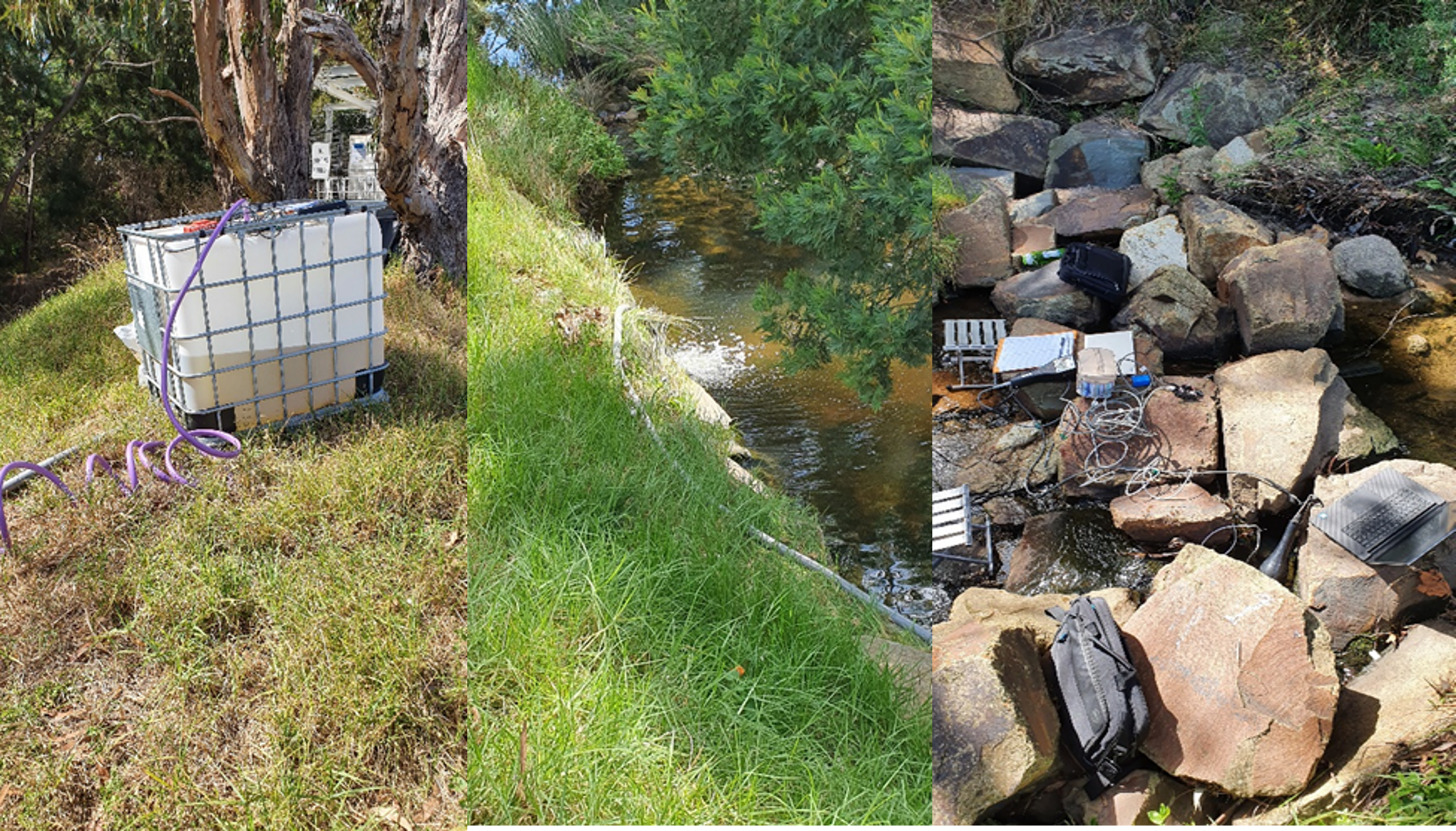
The data from the salt tracer experiments showed the low-cost sensors can detect both large and small changes in water quality with a clear peak in EC above background levels, and with similar patterns to the (more expensive) commercially made water quality sensors. As a consequence, these devices could be a cost-effective solution for sewer spill alert where a threshold concentration was established to warn of sewer spill. Particularly as they are also easy to calibrate, had low power consumption and if damaged, can be replaced at minimum cost.
However, the experiments also showed that their application would be best suited to large sewer overflows where heavy contamination is likely and there is low background EC in the waterways. These changes in water quality will be easy to detect as the signal almost doubles. Whereas, in a situation where there are high background salinity levels in the waterway combined with very dilute wastewater from the sewer system it would be difficult to detect a change as levels only increase very slightly.
Further work is needed to develop and test anomaly detection systems especially for smaller, dilute sewer spills. Development of new and more sensitive systems to sewer spills other than just EC and temperature could also provide greater sensitivity of detection under a range of conditions.
Strategic lead: Department of Jobs, Precincts and Regions - Biosecurity (after MoG - Biosecurity now sits within DEECA)
Activity reference numbers: 7.1.001, 7.1.002, 7.2.001 and 7.2.002
Developing collaborative partnerships across government, industry and the community to detect and respond to marine pests is central to achieving Priority Action 7.1 of the Port Phillip Bay Environmental Management Plan 2017-2027 – Prevent introduction and dispersal of marine pests.
Marine pests are highly invasive, non-native plants and animals that can be introduced and spread around Victoria, often by hitchhiking on commercial and recreational vessels. When introduced to new environments, marine pests may have no natural predators or processes to keep their populations in check. Unfortunately, once they become established, marine pests are extremely difficult to control and can cause significant harm to Victoria's marine environment and industries. These pests can include a wide range of organisms, from algae to various species of sea stars, mussels and crabs.
One of the key principles of marine biosecurity is that managing and responding to threats is a shared responsibility across all sectors of the community. No one organisation can be expected to manage the risks and impacts alone. For this reason, building a sense of shared responsibility for minimising the risk of pest introduction and spread is an integral part of successful prevention and management of marine pests.
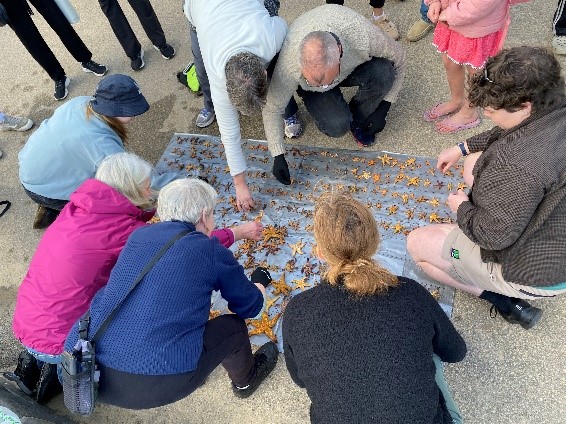
While there will always be more to do, several initiatives across Victoria are helping to protect our marine environments from both exotic and established marine pests.
- Agriculture Victoria, within the Department of Energy, Environment and Climate Action, has recently established the state’s first government-led marine biosecurity surveillance program at Victoria’s commercial ports. The program uses a combination of surveillance tools to aid in the early detection of marine pests in various life stages. The program has established key partnerships with organisations such as the Ports of Melbourne, Hastings and Portland, BlueScope Steel, ExxonMobil and GrainCorp.
- The Department of Energy, Environment and Climate Action assists partner agencies to plan for and respond to marine pests, including as a member of the Victorian Marine Pest Consultative Committee. This includes support for removal of marine pests, such as through the Port Phillip Bay Fund and Coastcare grants.
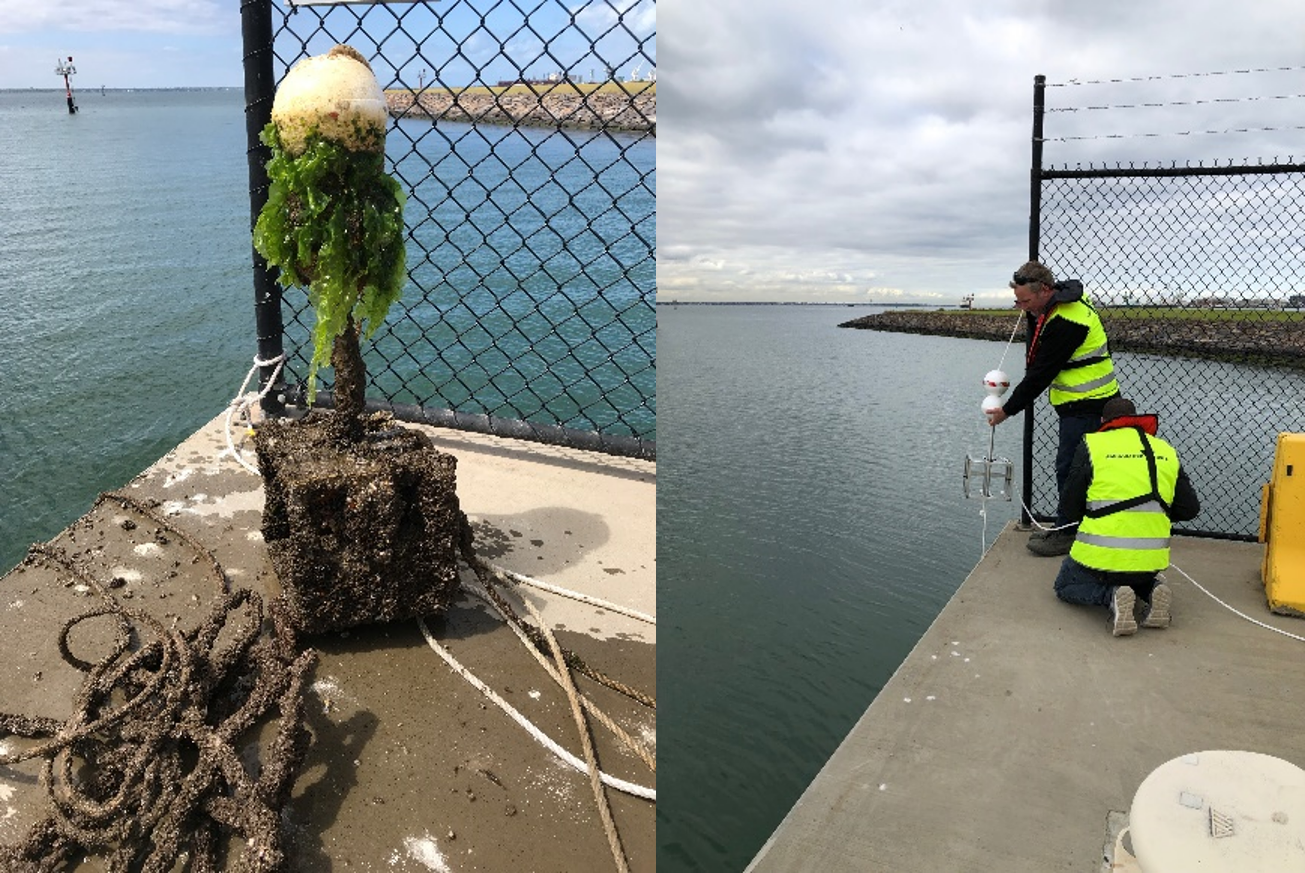
Page last updated: 22/10/25